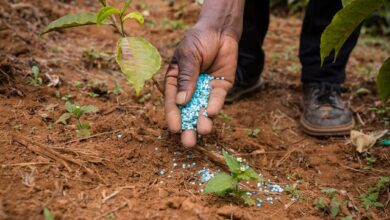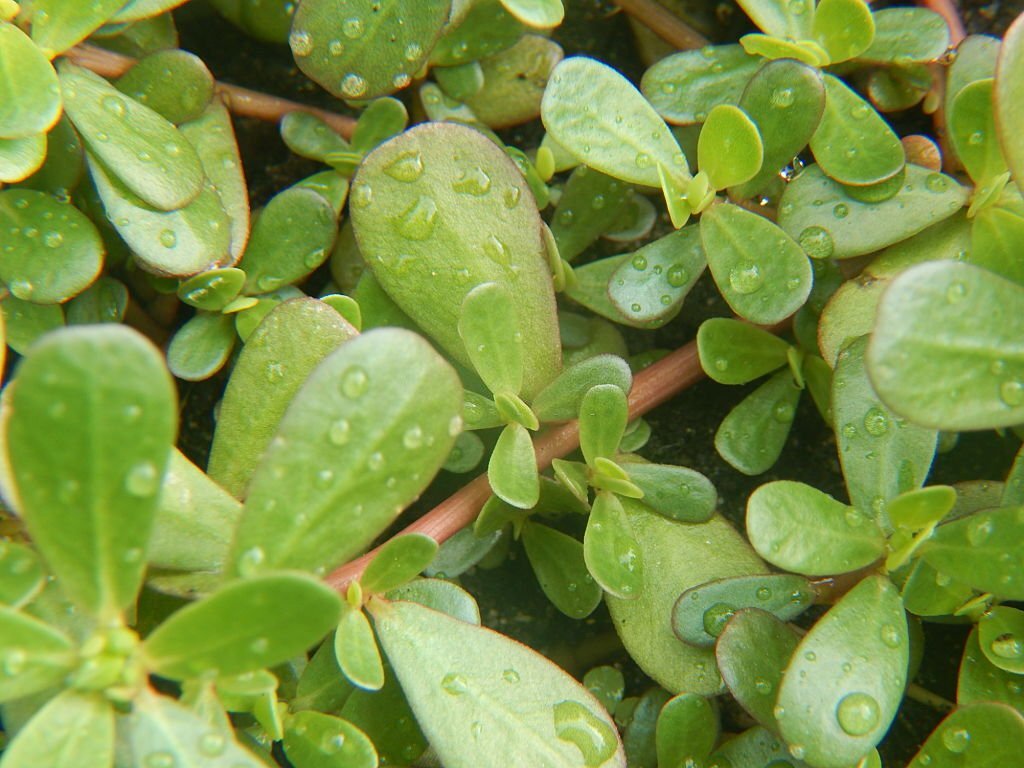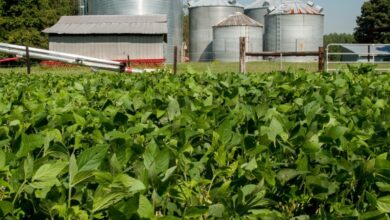Mastering the Art of Bonsai Figs: Cultivating Beauty in Miniature

Last updated on June 24th, 2024 at 11:11 am
Introduction to Bonsai Figs
Welcome to the enchanting world of bonsai figs, where beauty is cultivated in miniature. These tiny trees have captivated the hearts of nature lovers and artists alike for centuries, with their intricate branches and delicate foliage. In this blog post, we will delve into the art of growing bonsai figs, exploring their history, types suitable for cultivation, necessary tools and materials, as well as the steps to create and maintain these living works of art. So grab your pruning shears and let’s embark on a journey into the captivating realm of bonsai figs!
The History and Origins of Bonsai Trees
The history and origins of bonsai trees can be traced back to ancient China, where they were known as “pun-sai.” These early miniature trees were considered a symbol of wealth and prestige among the Chinese elite. The practice of cultivating and nurturing bonsai trees eventually made its way to Japan, where it flourished and became an integral part of Japanese culture.
In Japan, the art form took on a new name – “bonsai,” which means “tray planting.” The Japanese embraced bonsai as a way to express their appreciation for nature in a confined space. Bonsai trees were seen as living works of art that captured the beauty and essence of full-sized trees in miniature form.
Over time, bonsai cultivation techniques evolved and spread to other parts of the world. Today, bonsais are cherished by enthusiasts around the globe who seek to create these living sculptures in their own homes or gardens.
The intricate process of creating a bonsai involves careful pruning, wiring, shaping, and training over many years. It requires patience, skill, and an understanding of horticulture principles. Each tree is unique and reflects both the artistic vision of its creator and the inherent characteristics of the species being cultivated.
Bonsais come in various styles such as formal upright, informal upright, slanting style, cascading style, and windswept style – each with its own aesthetic appeal. They can be displayed indoors or outdoors depending on their specific care requirements.
By exploring the rich history behind bonsais’ origins, you gain a deeper appreciation for this timeless art form that has captivated people across cultures for centuries.
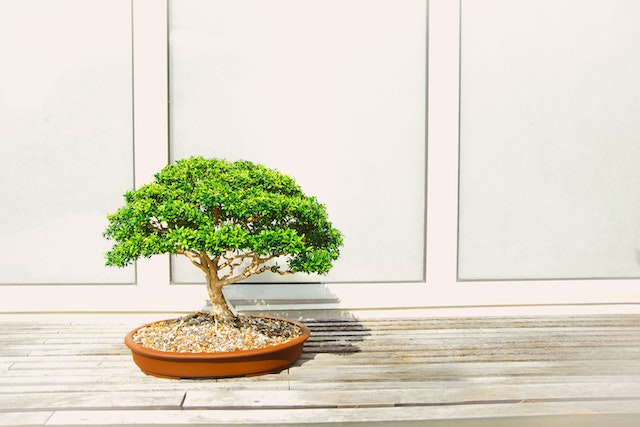
Types of Fig Trees Suitable for Bonsai
When it comes to creating a bonsai fig tree, selecting the right type of fig tree is crucial. While there are many varieties of fig trees out there, not all of them are suitable for bonsai cultivation. Here are some popular choices that have proven to be successful in the art of bonsai:
1. Ficus Retusa: Also known as the “Indian Laurel,” this variety is native to Southeast Asia and is highly adaptable to different climates. Its small leaves and dense foliage make it an ideal choice for bonsai enthusiasts.
2. Ficus Carica: Commonly known as the “Common Fig,” this species originates from the Mediterranean region. It has large, lobed leaves that add an element of drama and uniqueness to any bonsai composition.
3. Ficus Benjamina: The “Weeping Fig” hails from tropical regions such as Asia and Australia. With its graceful drooping branches and glossy green leaves, it creates a sense of tranquility when crafted into a bonsai form.
4. Ficus Microcarpa Ginseng: This variety, also called the “Chinese banyan,” features thick aerial roots that give it a distinctive appearance reminiscent of ancient trees found in Asian landscapes.
By carefully selecting one or more types of fig trees suited for your climate and personal aesthetic preferences, you can embark on your journey towards mastering the artistry behind cultivating beautiful bonsais in miniature form!
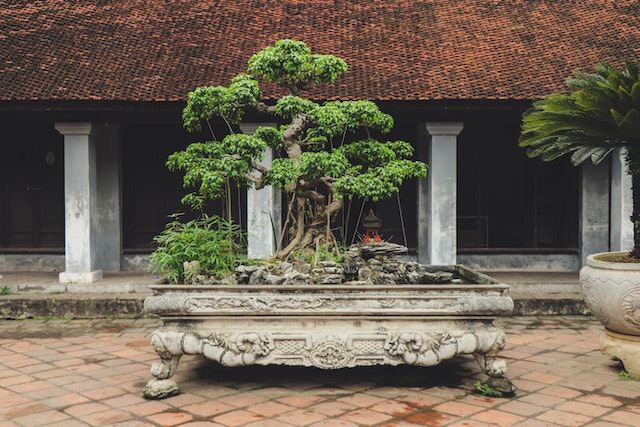
Tools and Materials Needed for Bonsai Fig Cultivation
When it comes to cultivating bonsai fig trees, having the right tools and materials is essential for success. Here are some key items you’ll need to get started on your bonsai journey.
First and foremost, you’ll need a high-quality pair of pruning shears. These will be used to trim and shape your fig tree as it grows. Look for shears with sharp blades and comfortable handles that allow for precise cuts.
Next, a concave branch cutter is indispensable for removing larger branches without damaging the trunk or leaving unsightly scars. This specialized tool creates clean cuts that promote proper healing.
To wire your bonsai fig into desired shapes, you’ll need aluminum or copper wire in various thicknesses. The wire should be flexible enough to bend but strong enough to hold its shape once applied.
A root hook is another handy tool that helps separate roots during transplanting or repotting. It assists in maintaining the health of the root system while ensuring proper growth in confined spaces.
For watering purposes, a fine mist spray bottle can come in handy. This allows you to evenly distribute water without causing damage or soil erosion around delicate roots.
In terms of materials, well-draining soil specifically formulated for bonsai plants is crucial. Look for mixes that provide good drainage while retaining moisture – striking this balance ensures healthy growth.
Consider investing in quality pots designed specifically for bonsai cultivation. These pots typically have small drain holes at the bottom and shallow depths suitable for miniature trees.
Having these tools and materials readily available will set you up for success as you embark on your journey into cultivating beautiful bonsai figs!
Steps to Create and Maintain a Bonsai Fig Tree
Creating and maintaining a bonsai fig tree is a fascinating journey that requires patience, attention to detail, and a deep appreciation for nature’s beauty. If you’re ready to embark on this artistic endeavor, here are some essential steps to guide you along the way.
Choose a healthy young fig tree sapling with small leaves suitable for bonsai cultivation. Carefully remove it from its container and gently prune the roots to promote growth in a shallow pot or tray.
Next, select an appropriate soil mix that drains well while retaining enough moisture for your bonsai fig. A blend of akadama soil, pumice, and lava rock works wonders.
Once your tree is potted up, place it in a location where it will receive adequate sunlight but avoid extreme temperatures. Regular watering is crucial; ensure that the soil remains moist but not waterlogged.
To maintain the desired miniature size of your bonsai fig tree, pruning plays an integral role. Regularly trim excess branches and foliage while shaping it into your desired form using sharp shears or scissors designed specifically for Bonsai trees.
Additionally, wiring can help guide branches’ growth into elegant shapes over time. Be careful not to apply too much pressure so as not to damage delicate limbs.
Fertilize your bonsai fig regularly during periods of active growth with balanced organic fertilizer. This will replenish nutrients necessary for its overall health and vigor.
Remember that cultivating a bonsai fig tree is an ongoing process requiring constant care and attention. With time and dedication though, you’ll witness this living work of art flourish right before your eyes!
Common Mistakes to Avoid When Growing Bonsai Figs
When it comes to cultivating bonsai figs, there are a few common mistakes that beginners often make. By being aware of these pitfalls, you can ensure the health and longevity of your miniature tree.
One mistake is not providing adequate sunlight for your bonsai fig. These trees need plenty of direct sunlight to thrive. Placing them in a dimly lit corner or indoors will result in weak growth and poor overall health.
Another mistake is overwatering your bonsai fig. While it’s important to keep the soil moist, excessive watering can lead to root rot and other issues. It’s crucial to find the right balance and only water when necessary.
Furthermore, neglecting proper pruning techniques can hinder the development of your bonsai fig tree. Regular pruning helps maintain its shape and encourages new growth. Be sure to research proper pruning methods for fig trees specifically.
Additionally, using improper soil composition can also be detrimental. Bonsai figs require well-draining soil with good moisture retention properties. Using regular potting soil may suffocate the roots or cause drainage problems.
Neglecting appropriate fertilization is another common mistake made by beginners. Bonsai figs benefit from regular feeding during their growing season with a balanced fertilizer designed for woody plants.
By avoiding these common mistakes and taking care of your bonsai fig properly, you’ll be on your way to creating a beautiful work of art in miniature form!
The Artistic Aspect of Bonsai Figs: Understanding Pruning, Wiring, and Shaping Techniques
The Artistic Aspect of Bonsai Figs: Understanding Pruning, Wiring, and Shaping Techniques
Mastering the art of bonsai figs is not just about cultivating a miniature tree; it’s also about creating a living work of art. The artistic aspect comes into play when we delve into the techniques of pruning, wiring, and shaping.
Pruning is essential for maintaining the desired shape and size of your bonsai fig tree. By carefully trimming branches and foliage, you can create balance and harmony in its overall form. It allows you to control growth patterns, encourage new shoots and leaves, as well as enhance the overall aesthetic appeal.
Wiring is another important technique used in bonsai fig cultivation. It involves wrapping aluminum or copper wire around branches to guide their growth direction. This allows you to create elegant curves or intricate shapes that mimic ancient trees found in nature. Proper wiring requires patience and precision so as not to damage delicate branches.
Shaping is where your creativity truly shines through in bonsai fig cultivation. With skillful pruning combined with strategic wiring, you can sculpt your miniature tree into various styles such as formal upright (chokkan), slanting (shakan), cascade (kengai), or windswept (fukinagashi). Each style conveys a different mood or story within your bonsai creation.
Understanding these techniques takes time and practice but will ultimately reward you with a stunning masterpiece that reflects both nature’s beauty and your own artistic expression.
In conclusion…
Bonsai fig cultivation offers an opportunity to bring the beauty of nature indoors while incorporating our own creative touch. From understanding the history behind these fascinating miniature trees to selecting suitable species for bonsai cultivation, mastering this art form requires dedication but rewards us with true natural beauty captured in miniature form.
So why not embark on this journey? Start by gathering the necessary tools and materials outlined earlier in this article. Follow step-by-step instructions to create and maintain your bonsai fig tree, avoiding common mistakes

